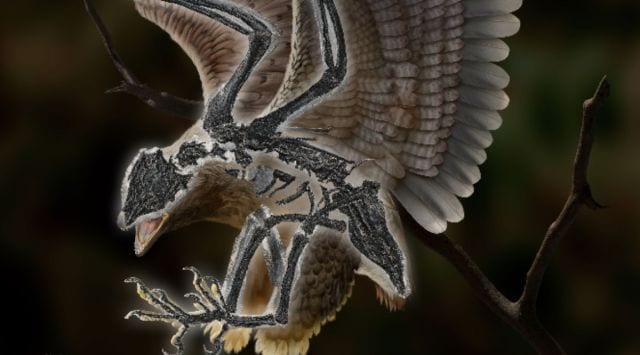Bird or dinosaur? Chinese researchers unearth bizarre fossil that raises questions on evolution
A bizarre fossil found in China seems to have a dinosaur-like head and bird-like body, opening up more questions about the evolution of dinosaurs into birds.
 Cratonavis zhui's fossils, discovered in China, seem to exhibit a dinosaur-like skull and a bird-like body. (Image credit: Chinese Academy of Sciences)
Cratonavis zhui's fossils, discovered in China, seem to exhibit a dinosaur-like skull and a bird-like body. (Image credit: Chinese Academy of Sciences) There is a generally accepted consensus among scientists that birds evolved from dinosaurs. However, according to the Chinese Academy of Sciences palaeontologists are yet to comprehend the extent of this dramatic evolution. Now, a 120-million-year-old fossil has further complicated the contentious subject. The recently discovered fossil seems to have a dinosaur-like head and a body that resembles a bird.
A study published in Nature Ecology & Evolution this month documents how the Cratonavis zhui has a body similar to a bird while having a “surprisingly elongated” scapula and first metatarsal bones, which makes it stand out from all other birds, including those that were discovered as fossils.
In the aviation evolutionary tree, the Cratonavis is positioned somewhere between the reptile-like dinosaur Archaeopteryx and the Ornithothoraces. The latter group had already evolved many of the characteristics that we see in modern birds.
Studying the fossil
In order to study the fossil, the researchers first used high-resolution CT scanning while the fossil was still enclosed in its rocky resting place. Later, they digitally removed the bones and reconstructed the original shape and function of the skull. At this point, it was observed that the fossil’s skull is nearly identical to that of dinosaurs like the T.rex, instead of being bird-like.
The Cratonavis could not move its upper bill independently of its skull and the lower jaw. “The primitive cranial features speak to the fact that most Cretaceous birds such as Cratonavis could not move their upper bill independently with respect to the braincase and lower jaw, a functional innovation widely distributed among living birds that contribute to their enormous ecological diversity,” said Li Zhiheng, co-lead author of the study, in a press statement.
According to co-lead author Wang Min, the peculiar nature of the scapula (bone in the shoulder) allowed the species to better rotate its wing, compensating for its underdeveloped flight capabilities.
Also, according to the study, the transition from dinosaur to birds favoured a shorter first metatarsal bone until it reached its optimal size, which is less than a quarter of the length of the second metatarsal.







